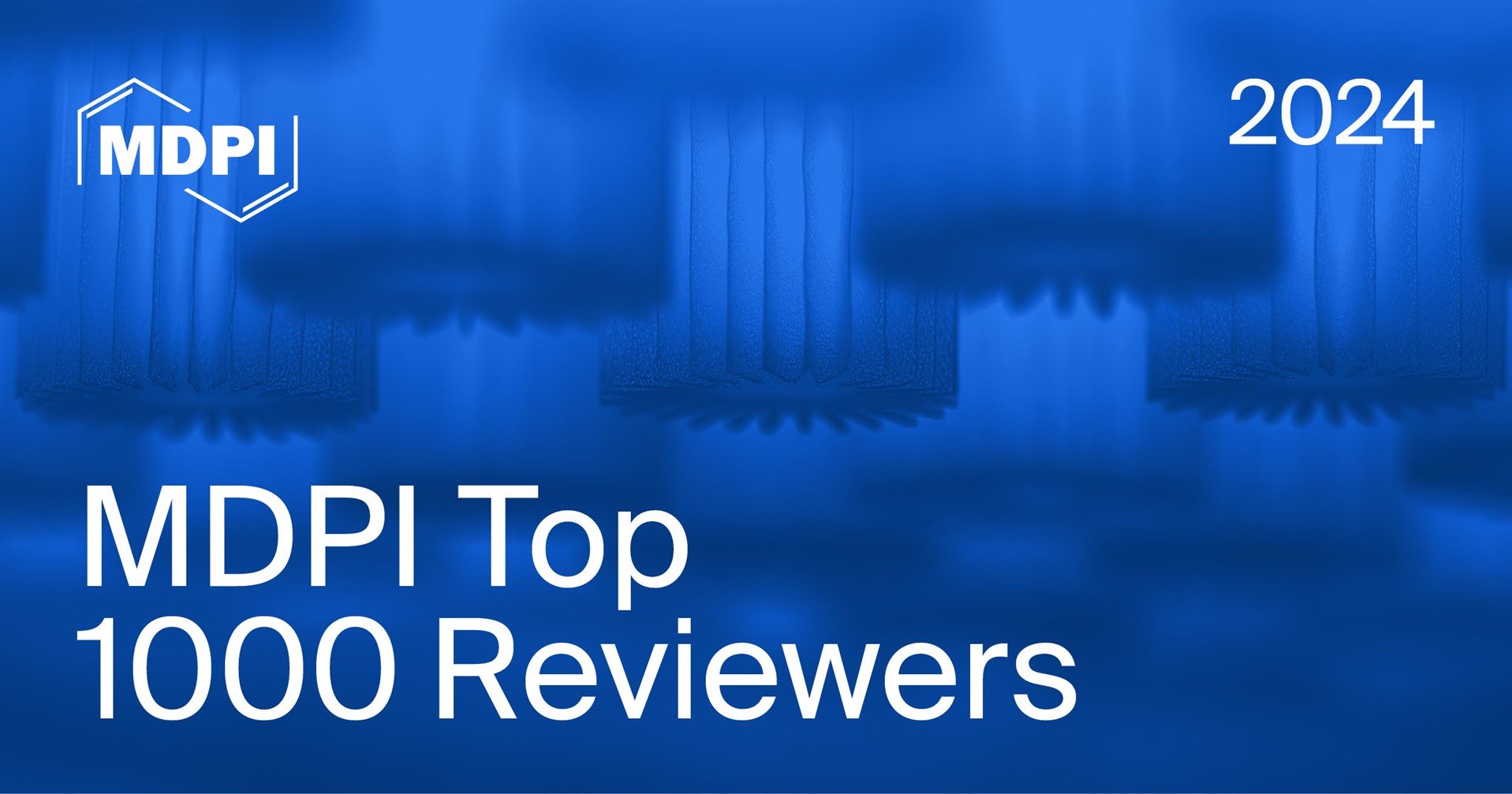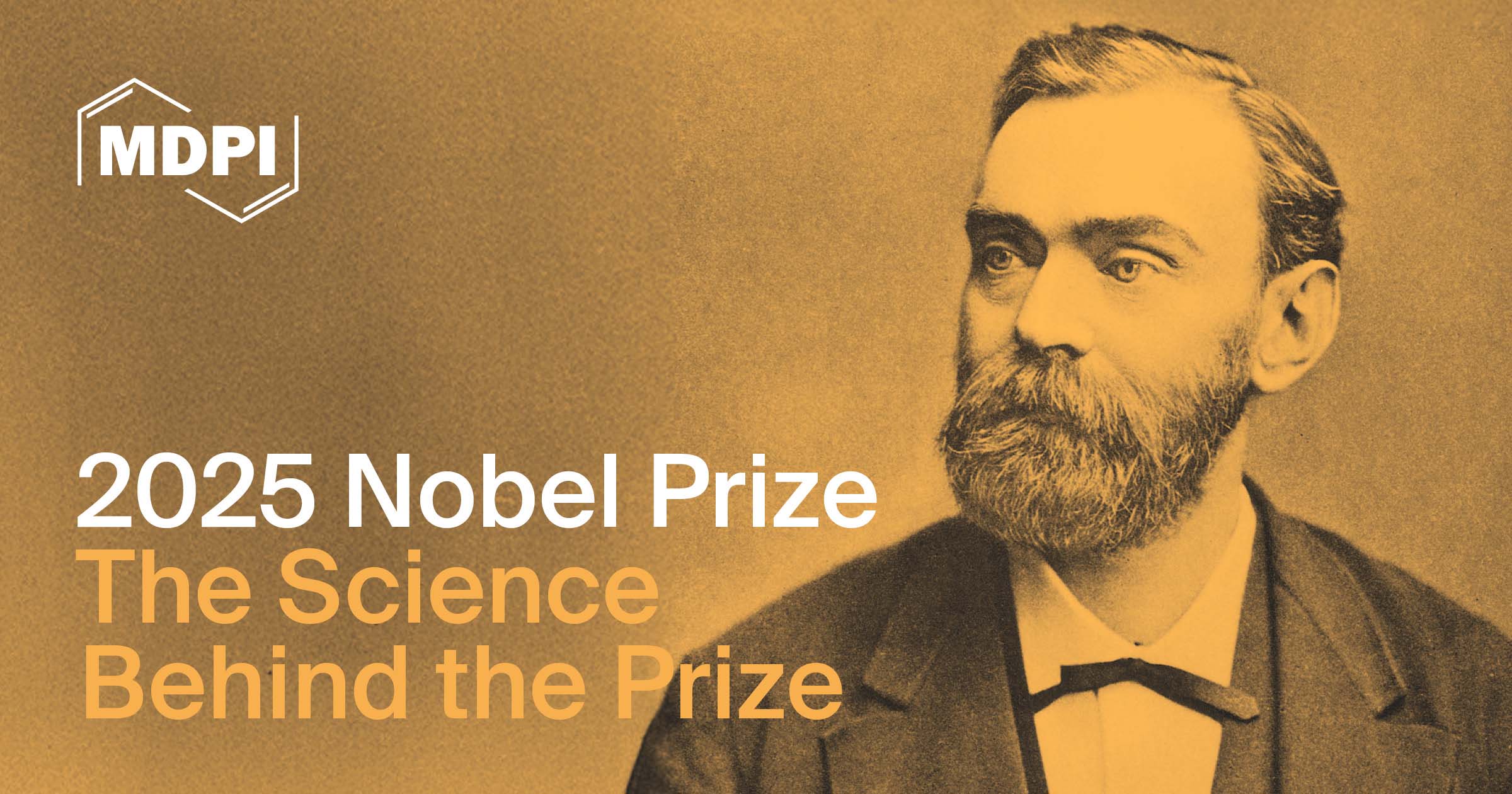Journal Description
Environmental and Earth Sciences Proceedings
Environmental and Earth Sciences Proceedings
- formerly Environmental Sciences Proceedings - is an open access journal dedicated to publish findings revealed from academic conferences, workshops and similar events in all areas of environmental and earth sciences. Published items are approved by the conference committee, and original research content is peer reviewed.
Latest Articles
Etesian Winds and Sea Surface Chlorophyll Concentrations over the Eastern Aegean
Environ. Earth Sci. Proc. 2025, 35(1), 69; https://doi.org/10.3390/eesp2025035069 - 9 Oct 2025
Abstract
►
Show Figures
Etesian winds, the characteristic summer winds over large parts of Greece and the eastern Mediterranean, can cause coastal upwelling, especially over the eastern Aegean. The question that many studies address is whether these northern winds can cause upwelling processes that alter not only
[...] Read more.
Etesian winds, the characteristic summer winds over large parts of Greece and the eastern Mediterranean, can cause coastal upwelling, especially over the eastern Aegean. The question that many studies address is whether these northern winds can cause upwelling processes that alter not only sea surface temperature but also chlorophyll concentrations, which are indicative of phytoplankton growth and overall ocean health. The present study is an effort to investigate the above matter over the eastern Aegean, from Lesvos to Ikaria and Samos islands, on a monthly basis, based on all the available satellite chlorophyll data up to now.
Full article
Open AccessProceeding Paper
Observed Changes in Temperature Extremes over Greece: Warm and Cold Spells
by
Anna Mamara, Athanasios A. Argiriou, Nikolaos Karatarakis and Vasileios Armaos
Environ. Earth Sci. Proc. 2025, 35(1), 68; https://doi.org/10.3390/eesp2025035068 - 9 Oct 2025
Abstract
►▼
Show Figures
The daily maximum and minimum temperatures measured by the HNMS’s stations from 1960 to 2022, are used to compute percentile-based indices capturing the percentage of days below or above the 10th and 90th percentile, respectively (TN10p, TX10p, TN90p, TX90p), and event duration indicators
[...] Read more.
The daily maximum and minimum temperatures measured by the HNMS’s stations from 1960 to 2022, are used to compute percentile-based indices capturing the percentage of days below or above the 10th and 90th percentile, respectively (TN10p, TX10p, TN90p, TX90p), and event duration indicators (WSDI and CSDI). The climate extremes indices are evaluated assuming two different reference periods (1961–1990 and 1991–2020), and trend analysis is performed using the Mann–Kendall test. The results show a significant increase in the frequency of the warm days and nights. The magnitude and perceived timing of trends depend on the baseline chosen. Using the warmer 1991–2020 reference period dampens the upward trends in warm–extreme indices and amplifies the downward trends in cold extremes.
Full article

Figure 1
Open AccessProceeding Paper
Assessing the Sensitivity of WRF to Surface Urban Physics
by
Iraklis Kyriakidis, Vasileios Pavlidis, Maria Gkolemi, Zina Mitraka, Nektarios Chrysoulakis and Eleni Katragkou
Environ. Earth Sci. Proc. 2025, 35(1), 67; https://doi.org/10.3390/eesp2025035067 - 9 Oct 2025
Abstract
►▼
Show Figures
This study investigates the sensitivity of an urban parameterization scheme of the Weather Research and Forecasting model (WRF). The model sensitivity is tested during the period April–May 2020 over the greater Paris region. The parent domain covers Europe with a 12 km horizontal
[...] Read more.
This study investigates the sensitivity of an urban parameterization scheme of the Weather Research and Forecasting model (WRF). The model sensitivity is tested during the period April–May 2020 over the greater Paris region. The parent domain covers Europe with a 12 km horizontal resolution, with a nested one covering the greater Paris region with a 3 km horizontal resolution. A multi-layer urban scheme called Building Effect Parameterization coupled with the Building Energy Model (BEP-BEM) was applied in two simulations: (1) BEP-BEM Paris, with urban options tailored for the Paris region, which were derived from Earth Observation data, and (2) BEP-BEM Europe, which uses an updated urban parameter table with an estimated average profile for European cities. These two simulations were compared with observations and a WRF simulation using a simple urban parameterization (BULK approach). BULK and multi-layer urban scheme experiments present a similar general error for April, underestimating temperature, while the BEP-BEM runs overestimate temperature for May. The simulation with the advanced tailored urban parameterization over Paris appears to have the best overall performance in this 2-month period.
Full article

Figure 1
Open AccessProceeding Paper
Seasonal Variability and Monthly Trends in Upper Tropospheric Humidity for the Period 1979–2020
by
Charis Benetatos, Kostas Eleftheratos, Panagiotis T. Nastos and Christos Zerefos
Environ. Earth Sci. Proc. 2024, 31(1), 66; https://doi.org/10.3390/eesp2025035066 - 8 Oct 2025
Abstract
The monthly variability of Upper Tropospheric Humidity with respect to ice (UTHi) is examined during the forty-year period 1979–2020. Trends per decade are calculated for every month separately and for 10° latitude bands. Statistical significance is estimated with the Mann–Kendall test. Results show
[...] Read more.
The monthly variability of Upper Tropospheric Humidity with respect to ice (UTHi) is examined during the forty-year period 1979–2020. Trends per decade are calculated for every month separately and for 10° latitude bands. Statistical significance is estimated with the Mann–Kendall test. Results show significant positive UTHi trends in northern and southern midlatitude regions. In the northern midlatitudes, the strongest trends are observed in November, December and February and in the southern midlatitudes in April, May and June. These trends range between 0.5 and 1.2% per decade. In contrast, tropical regions display weak or negative trends. These patterns highlight regional and seasonal differences in upper tropospheric moisture changes, which are critical for understanding water vapour feedback and its role in climate variability and long-term atmospheric moisture behaviour.
Full article
(This article belongs to the Proceedings of The 4th International Electronic Conference on Forests)
►▼
Show Figures
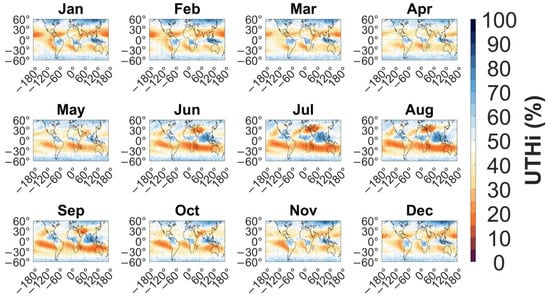
Figure 1
Open AccessProceeding Paper
Assessing the Urban Heat Island (UHI) Effect Using Land Surface Temperature (LST) and Normalized Difference Built-Up Index (NDBI): A Case Study on Paphos, Cyprus
by
Christodoulos Dimitriou, Silas Michaelides, Kyriacos Themistocleous, Diofantos G. Hadjimitsis, George Papadavid, Ioannis Gitas and Nicholas Kyriakides
Environ. Earth Sci. Proc. 2025, 35(1), 65; https://doi.org/10.3390/eesp2025035065 - 6 Oct 2025
Abstract
►▼
Show Figures
The Urban Heat Island (UHI) effect is responsible for increased urban temperatures compared to rural areas due to heat-absorbing materials like concrete and asphalt, worsening climate change impacts and creating thermal discomfort for citizens. Limited green spaces reduce natural cooling, increasing health risks.
[...] Read more.
The Urban Heat Island (UHI) effect is responsible for increased urban temperatures compared to rural areas due to heat-absorbing materials like concrete and asphalt, worsening climate change impacts and creating thermal discomfort for citizens. Limited green spaces reduce natural cooling, increasing health risks. This study examines UHI in Paphos (2015–2024) during significant infrastructure development, using Landsat-9 data to analyze Land Surface Temperature (LST), urban growth (NDBI), and vegetation (NDVI). The results reveal how development has affected the microclimate of Paphos compared with the limitation of green spaces through time series. This study also highlights remote sensing’s effectiveness in assessing UHIs.
Full article

Figure 1
Open AccessProceeding Paper
Reliability Evaluation of CAMS Air Quality Products in the Context of Different Land Uses: The Example of Cyprus
by
Jude Brian Ramesh, Stelios P. Neophytides, Orestis Livadiotis, Diofantos G. Hadjimitsis, Silas Michaelides and Maria N. Anastasiadou
Environ. Earth Sci. Proc. 2025, 35(1), 64; https://doi.org/10.3390/eesp2025035064 - 6 Oct 2025
Abstract
►▼
Show Figures
Cyprus is located between Europe, Asia and Africa, and its location is vulnerable to dust transport from the Sahara Desert, wildfire smoke particles from surrounding regions, and other anthropogenic emissions caused by several factors, mostly due to business activities on harbor areas. Moreover,
[...] Read more.
Cyprus is located between Europe, Asia and Africa, and its location is vulnerable to dust transport from the Sahara Desert, wildfire smoke particles from surrounding regions, and other anthropogenic emissions caused by several factors, mostly due to business activities on harbor areas. Moreover, the country suffers from heavy traffic conditions caused by the limited public transportation system in Cyprus. Therefore, taking into consideration the country’s geographic location, heavy commercial activities, and lack of good public transportation system, Cyprus is exposed to dust episodes and high anthropogenic emissions associated with multiple health and environmental issues. Therefore, continuous and qualitative air quality monitoring is essential. The Department of Labor Inspection of Cyprus (DLI) has established an air quality monitoring network that consists of 11 stations at strategic geographic locations covering rural, residential, traffic and industrial zones. This network measures the following pollutants: nitrogen oxide, nitrogen dioxide, sulfur dioxide, ozone, carbon monoxide, particulate matter 2.5, and particulate matter 10. This case study compares and evaluates the agreement between Copernicus Atmosphere Monitoring Service (CAMS) air quality products and ground-truth data from the DLI air quality network. The study period spans from January to December 2024. This study focuses on the following three pollutants: particulate matter 2.5, particulate matter 10, and ozone, using Ensemble Median, EMEP, and CHIMERE near-real-time model data provided by CAMS. A data analysis was performed to identify the agreement and the error rate between those two datasets (i.e., ground-truth air quality data and CAMS air quality data). In addition, this study assesses the reliability of assimilated datasets from CAMS across rural, residential, traffic and industrial zones. The results showcase how CAMS near-real-time analysis data can supplement air quality monitoring in locations without the availability of ground-truth data.
Full article

Figure 1
Open AccessProceeding Paper
Air Pollutants Projections Using SHERPA Simulator: How Can Cyprus Achieve Cleaner Air
by
Jude Brian Ramesh, Stelios P. Neophytides, Orestis Livadiotis, Diofantos G. Hadjimitsis, Silas Michaelides and Maria N. Anastasiadou
Environ. Earth Sci. Proc. 2025, 35(1), 63; https://doi.org/10.3390/eesp2025035063 - 3 Oct 2025
Abstract
►▼
Show Figures
Air quality is a vital factor for safeguarding public and environmental health. Particulate matter (i.e., PM2.5 and PM10) and nitrogen dioxide are among the most harmful air pollutants leading to severe health risks such as respiratory and cardiovascular diseases, while also affecting the
[...] Read more.
Air quality is a vital factor for safeguarding public and environmental health. Particulate matter (i.e., PM2.5 and PM10) and nitrogen dioxide are among the most harmful air pollutants leading to severe health risks such as respiratory and cardiovascular diseases, while also affecting the environment negatively by contributing to the formation of acid rains and ground level ozone. The European Union has introduced new thresholds on those pollutants to be met by the year 2030, taking into consideration the guidelines set by the World Health Organization, aiming for a healthier environment for humans and living species. Cyprus is an island that is vulnerable to those pollutants mostly due to its geographic location, facilitating shipping activities and dust transport from Sahara Desert, and the methods used to produce electricity which primarily rely on petroleum products. Furthermore, the country suffers from heavy traffic conditions, making it susceptible to high levels of nitrogen dioxide. Thus, the projection of air pollutants according to different scenarios based on regulations and policies of the European Union are necessary towards clean air and better practices. The Screening for High Emission Reduction Potential on Air (SHERPA) is a tool developed by the European Commission which allows the simulation of emission reduction scenarios and their effect on the following key pollutants: NO, NO2, O3, PM2.5, PM10. This study aims to assess the potential of the SHERPA simulation tool to support air quality related decision and policy planning in Cyprus to ensure that the country will remain within the thresholds that will be applicable in 2030.
Full article

Figure 1
Open AccessProceeding Paper
National Integration and Optimization of CAMS Products: The Eratosthenes Center of Excellence as National Coordinator for Atmospheric Monitoring in Cyprus
by
Maria Anastasiadou, Silas Michaelides and Diofantos G. Hadjimitsis
Environ. Earth Sci. Proc. 2025, 35(1), 62; https://doi.org/10.3390/eesp2025035062 - 2 Oct 2025
Abstract
►▼
Show Figures
The Copernicus Atmosphere Monitoring Service (CAMS) offers a broad portfolio of global and regional atmospheric products that support environmental monitoring, air quality assessment, health applications and climate policy. Under the CAMS National Collaboration Programme (NCP), the ERATOSTHENES Centre of Excellence (ECoE) serves as
[...] Read more.
The Copernicus Atmosphere Monitoring Service (CAMS) offers a broad portfolio of global and regional atmospheric products that support environmental monitoring, air quality assessment, health applications and climate policy. Under the CAMS National Collaboration Programme (NCP), the ERATOSTHENES Centre of Excellence (ECoE) serves as the national coordinator for Cyprus, working to bridge the gap between CAMS outputs and local end-user needs. This paper presents the strategy and implementation framework adopted by ECoE to facilitate CAMS uptake in Cyprus. Efforts focus on integrating CAMS data into national systems, developing tailored applications (e.g., UV forecasting, dust event alerts), building stakeholder capacity, and supporting regulatory reporting. Outcomes also include the deployment of the AirData Hub platform and initial steps toward institutionalizing CAMS-derived workflows in public health and environmental planning. The work highlights both the opportunities and technical challenges of customizing CAMS products for small-island contexts.
Full article

Figure 1
Open AccessProceeding Paper
A Spatiotemporal Analysis of Droughts in Greece (1960–2022): Severity, Duration and Frequency Based on the SPI and SPEI
by
Michael Samouris, Anna Mamara, Vasileios Armaos and Athanassios Argiriou
Environ. Earth Sci. Proc. 2025, 35(1), 61; https://doi.org/10.3390/eesp2025035061 - 1 Oct 2025
Abstract
►▼
Show Figures
This study focuses on Greece, providing a comprehensive climatological analysis of drought conditions from 1960 to 2022. The Standardized Precipitation Index (SPI) and the Standardized Precipitation Evapotranspiration Index (SPEI) were employed on a 1-month timescale to assess meteorological drying conditions over the study
[...] Read more.
This study focuses on Greece, providing a comprehensive climatological analysis of drought conditions from 1960 to 2022. The Standardized Precipitation Index (SPI) and the Standardized Precipitation Evapotranspiration Index (SPEI) were employed on a 1-month timescale to assess meteorological drying conditions over the study period. The Drought Occurrence Probability (DOP), Total Drought Duration (TDD) and drought severity were analyzed spatially, while temporal trends were examined using rolling time windows and the Mann–Kendall test. The findings reveal regional differences in drought characteristics and indicate more intense drought conditions under the SPEI compared to the SPI, underscoring the increasing role of temperature in drought intensification.
Full article

Figure 1
Open AccessProceeding Paper
Atmospheric Circulation Processes Leading to the Generation of Halcyon Days in Athens, Greece
by
Nicholas Prezerakos and Dimitris Katsanos
Environ. Earth Sci. Proc. 2025, 35(1), 60; https://doi.org/10.3390/eesp2025035060 - 1 Oct 2025
Abstract
►▼
Show Figures
Halcyon days are characterized by periods of one to three or more consecutive, typically sunny and mild days, occurring during winter (from 15 December to 15 February) in Attica, the region where Athens is located. We examined meteorological data from the station of
[...] Read more.
Halcyon days are characterized by periods of one to three or more consecutive, typically sunny and mild days, occurring during winter (from 15 December to 15 February) in Attica, the region where Athens is located. We examined meteorological data from the station of the National Observatory of Athens in Thission, over a 54-year period, applying criteria that include daily maximum temperatures equal to or greater than 12 °C, minimum temperatures equal to or greater than 4 °C, wind speeds equal to or less than 6 knots, and mean total cloudiness (between 06:00 and 18:00 GMT) equal to or less than 3.2 oktas. This analysis identified all Halcyon days that occurred during this period. Our statistical study revealed the annual evolution of these days and any possible relationship with climate change. We focused on understanding the dynamics of the atmospheric circulation processes associated with the occurrence of Halcyon days. The primary atmospheric circulation feature responsible for the generation of Halcyon days appears to be the establishment of a subtropical anticyclone over Greek territory.
Full article

Figure 1
Open AccessProceeding Paper
Deep 3D Scattering of Solar Radiation in the Atmosphere Due to Clouds-D3D
by
Andreas Kazantzidis, Stavros-Andreas Logothetis, Panagiotis Tzoumanikas, Orestis Panagopoulos and Georgios Kosmopoulos
Environ. Earth Sci. Proc. 2025, 35(1), 59; https://doi.org/10.3390/eesp2025035059 - 1 Oct 2025
Abstract
►▼
Show Figures
The three-dimensional (3D) structure of clouds is a key factor in atmospheric processes, profoundly influencing solar radiation transfer, weather patterns, and climate dynamics. However, accurately representing this complex structure in radiative transfer models remains a significant challenge. As part of the Deep 3D
[...] Read more.
The three-dimensional (3D) structure of clouds is a key factor in atmospheric processes, profoundly influencing solar radiation transfer, weather patterns, and climate dynamics. However, accurately representing this complex structure in radiative transfer models remains a significant challenge. As part of the Deep 3D Scattering of Solar Radiation in the Atmosphere due to Clouds (D3D) project, we conducted a comprehensive study on the role of all-sky imagers (ASIs) in reconstructing observational 3D cloud fields and integrating them into advanced 3D cloud modeling. Since November 2022, a network of four ASIs has been operating across the broader Patras region in Greece, continuously capturing atmospheric measurements over an area of approximately 50 km2. Using simultaneously captured images from the ASIs within the network, a 3D cloud reconstruction was performed utilizing advanced image processing techniques, with a primary focus on cumulus cloud scenarios. The Structure from Motion (SfM) technique was employed to reconstruct the 3D structural characteristics of clouds from two-dimensional images. The resulting 3D cloud fields were then integrated into the MYSTIC three-dimensional radiative transfer model to simulate and reconstruct solar irradiance fields.
Full article

Figure 1
Open AccessProceeding Paper
Supercell Thunderstorms on September 7, 2024, in Greece: Documentation and Predictability
by
Maria Christodoulou, Ioannis Tegoulias and Ioannis Pytharoulis
Environ. Earth Sci. Proc. 2025, 35(1), 58; https://doi.org/10.3390/eesp2025035058 - 30 Sep 2025
Abstract
►▼
Show Figures
On September 7, 2024, a deep convection event was observed in Northern and Central Greece, and based on radar data analysis, three supercells were identified. One of these, the most intense with maximum radar reflectivity of 68 dBZ, had a lifetime of almost
[...] Read more.
On September 7, 2024, a deep convection event was observed in Northern and Central Greece, and based on radar data analysis, three supercells were identified. One of these, the most intense with maximum radar reflectivity of 68 dBZ, had a lifetime of almost 7 h and covered a distance of more than 200 km, producing damaging winds and large hail along its track. The goal of this study was to analyze this case using radar data and to evaluate the predictability of such a high-impact event using a numerical weather prediction model. The Weather Research and Forecasting (ARW-WRF) model was used to perform an array of simulations, and using multiple initialization times, the influence of lead time was examined. Furthermore, the dependence of the results on the choice of parameterization scheme used in the model is assessed below. The model performed satisfactorily in predicting intense storm activity, without reaching the extreme values observed by the radar.
Full article

Figure 1
Open AccessProceeding Paper
Hail Measurement Characteristics in Central Macedonia: Relation to Radar-Derived Storm Parameters
by
Eleni Chatzi, Stavroula Stolaki, Soultana Dimoutsi, Aikaterini Mylothropoulou and Dimitra Delliou
Environ. Earth Sci. Proc. 2025, 35(1), 57; https://doi.org/10.3390/eesp2025035057 - 29 Sep 2025
Abstract
►▼
Show Figures
The aim of this research is to examine the relationship between hailstorm and hail intensity and describe their spatial distribution over the cultivation area of Central Macedonia, as captured by weather radar and hailpad data during six hail suppression seasons in 2019–2024. Storm
[...] Read more.
The aim of this research is to examine the relationship between hailstorm and hail intensity and describe their spatial distribution over the cultivation area of Central Macedonia, as captured by weather radar and hailpad data during six hail suppression seasons in 2019–2024. Storm radar characteristics can, to some extent, predict the hail size recorded, with an apparent discrimination on radar parameters among different observed hail sizes. Multicell hailstorms are the most common hailstorm types observed, and they mostly impact the west and northwest part, while supercells, although rare, are the most destructive to the eastern part of the area.
Full article

Figure 1
Open AccessProceeding Paper
Hail Measurement Characteristics in Central Macedonia—Spatial and Temporal Distribution
by
Soultana Dimoutsi, Eleni Chatzi, Aikaterini Mylothropoulou, Stavroula Stolaki and Dimitra Delliou
Environ. Earth Sci. Proc. 2025, 35(1), 56; https://doi.org/10.3390/eesp2025035056 - 29 Sep 2025
Abstract
►▼
Show Figures
The objective of this study is the statistical analysis of a six-year period (2019–2024) hit hailpad dataset over the area of Central Macedonia to define the temporal and spatial distributions of selected hail parameters based on hailpad network data. The maximum number of
[...] Read more.
The objective of this study is the statistical analysis of a six-year period (2019–2024) hit hailpad dataset over the area of Central Macedonia to define the temporal and spatial distributions of selected hail parameters based on hailpad network data. The maximum number of hail days was recorded in June, while the maximum number of hit hailpads was recorded in April and the secondary maximum was registered in June. During the spring months, hailfalls contain hail small in size, while during the summer months, larger sizes of hail are recorded more frequently. The region most frequently affected by hail is the northwest-west part of the area, and locally, the southern part. Pea- and grape-size hail is distributed almost evenly over the whole protection area, but walnut-size hail is mainly recorded over a rather narrow strip that crosses the entire area from northwest to southeast in its central part.
Full article
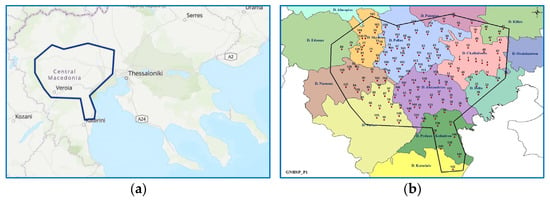
Figure 1
Open AccessProceeding Paper
Development of a Spatial Methodology for Minimum Temperature Estimation for Early Frost Management in Agricultural Areas of Central Macedonia
by
Kostas Chronopoulos, Elias Christoforides, Athanasios Kamoutsis and Ioulia Panagiotou
Environ. Earth Sci. Proc. 2025, 35(1), 55; https://doi.org/10.3390/eesp2025035055 - 29 Sep 2025
Abstract
►▼
Show Figures
This research develops a reliable methodology for estimating minimum temperature distribution in agricultural areas, focusing on frost conditions threatening crop production. The data was collected across the plain of Krya Vrysi in Central Macedonia. The approach uses linear regression equations between daily minimum
[...] Read more.
This research develops a reliable methodology for estimating minimum temperature distribution in agricultural areas, focusing on frost conditions threatening crop production. The data was collected across the plain of Krya Vrysi in Central Macedonia. The approach uses linear regression equations between daily minimum temperatures from a central station and 12 autonomous temperature sensors with data loggers. Statistical analysis covered winter 2023–2024, with 2025 validation showing exceptional predictive capability—R2 values of 0.97–0.99 and RMSE of 0.34–0.58 °C. Spatial interpolation employed the Radial Basis Function with thin plate splines, effective for agricultural microclimatic interpolation. This methodology provides an operational frost prediction tool, enabling targeted interventions, reducing production losses and enhancing agricultural resilience.
Full article

Figure 1
Open AccessProceeding Paper
Spatiotemporal Analysis of Forest Fires in Cyprus Using Earth Observation and Climate Data
by
Maria Prodromou, Stella Girtsou, George Leventis, Georgia Charalampous, Alexis Apostolakis, Marios Tzouvaras, Christodoulos Mettas, Giorgos Giannopoulos, Charalampos Kontoes and Diofantos Hadjimitsis
Environ. Earth Sci. Proc. 2025, 35(1), 54; https://doi.org/10.3390/eesp2025035054 - 29 Sep 2025
Abstract
►▼
Show Figures
Wildfire detection remains a critical challenge for authorities, with human activity being the leading cause. The historical conditions prevailing in burned forest areas require a comprehensive analysis at both the environmental and anthropogenic levels. This study presents a multidimensional dataset comprising data from
[...] Read more.
Wildfire detection remains a critical challenge for authorities, with human activity being the leading cause. The historical conditions prevailing in burned forest areas require a comprehensive analysis at both the environmental and anthropogenic levels. This study presents a multidimensional dataset comprising data from 2008 to 2024 and integrating Earth observation data and anthropogenic, environmental, meteorological, topographic, and fire-related features. This study evaluates, through time series analysis, the impact of climate trends such as increased temperature in comparison with anthropogenic activities such as deliberate fires. Time series analysis reveals that although climatic conditions with increased temperature and reduced precipitation in Cyprus intensify the risk of fire, the presence of fire events is primarily due to deliberate actions. The findings of this study support national-scale fire modeling, offering a foundation for targeted prevention, early warning systems, and sustainable forest fire management strategies.
Full article

Figure 1
Open AccessProceeding Paper
Assessing the Impact of Land Use Changes on Regional Climate over Europe
by
Sofia Eirini Paschou, Stergios Kartsios and Eleni Katragkou
Environ. Earth Sci. Proc. 2025, 35(1), 53; https://doi.org/10.3390/eesp2025035053 - 27 Sep 2025
Abstract
►▼
Show Figures
Anthropogenic alterations of the land surface through activities such as agriculture, forestry and urban development represent important human-induced forcings on the Earth’s climate system. This study, conducted in the framework of the UpClim project, employs the non-hydrostatic WRF-ARW v4.5.1 model forced by ERA5
[...] Read more.
Anthropogenic alterations of the land surface through activities such as agriculture, forestry and urban development represent important human-induced forcings on the Earth’s climate system. This study, conducted in the framework of the UpClim project, employs the non-hydrostatic WRF-ARW v4.5.1 model forced by ERA5 reanalysis data to assess the impact of land use changes (LUCs) on the European climate. The study aims to quantify the effects of LUCs over the EURO-CORDEX domain at 0.11° resolution during 1980–1985 by comparing simulations with transient land use forcing against a control run with static land use.
Full article

Figure 1
Open AccessProceeding Paper
The Role of the Hellenic Police in the Management of Natural Disasters: Legislative Framework
by
Isidora Gerontiotou, Panagiotis Nastos, Athanasios A. Argiriou and Leonidas Maroudas
Environ. Earth Sci. Proc. 2025, 35(1), 52; https://doi.org/10.3390/eesp2025035052 - 26 Sep 2025
Abstract
►▼
Show Figures
This study investigates the involvement of the Hellenic Police in the management of natural disasters. The legislation governing police participation in disaster management in Greece is based on the general framework of civil protection policy, outlining the responsibilities assigned to various agencies for
[...] Read more.
This study investigates the involvement of the Hellenic Police in the management of natural disasters. The legislation governing police participation in disaster management in Greece is based on the general framework of civil protection policy, outlining the responsibilities assigned to various agencies for handling emergency situations. The role of the Hellenic Police is particularly significant and proactive in both the prevention and management of natural disasters, with specific responsibilities and duties. Key areas of Hellenic Police involvement in disaster management include the following: 1. prevention and public awareness; 2. risk identification and management; 3. evacuation of areas, organized removal and relocation of citizens and traffic management; 4. cooperation and coordination with other authorities and services; 5. support for rescue teams; and 6. security and order in affected areas.
Full article

Figure 1
Open AccessProceeding Paper
Multi-Source Observational Evidence for Cloud Seeding Potential in Cyprus
by
Michalis Sioutas, Adam Brainard, Youssef Wehbe, Darin Langerud and Bruce Boe
Environ. Earth Sci. Proc. 2025, 35(1), 51; https://doi.org/10.3390/eesp2025035051 - 26 Sep 2025
Abstract
►▼
Show Figures
Cyprus faces mounting pressure on freshwater resources from climate change, recurrent drought, and rising demand. This study evaluates the feasibility of a rain enhancement program through cloud seeding, integrating long-term rain gauge records (1991–2024), lightning climatology (2021–2025), and local X-band weather radar data
[...] Read more.
Cyprus faces mounting pressure on freshwater resources from climate change, recurrent drought, and rising demand. This study evaluates the feasibility of a rain enhancement program through cloud seeding, integrating long-term rain gauge records (1991–2024), lightning climatology (2021–2025), and local X-band weather radar data (30 October 2024–4 January 2025) to quantify the frequency and characteristics of seedable clouds. Rain gauge analysis shows mean monthly rainfall exceeding 20 mm during October to April, with up to 16 rainfall events per month, indicating ample seeding opportunities. Lightning records show between 40–60 annual average thunderstorm occurrences, peaking in December (~10 days) along the Troodos Mountains in the central region and Limassol-Akrotiri in the south. Radar data analysis confirms the presence of both glaciogenic (≥25 dBZ at 5 km MSL) and hygroscopic (≥10 dBZ with ≥4 km depth) seedable cloud structures, with hotspots over the Troodos orography, southern plains, and maritime inflow zone. The combined results support the viability of an initial 7-month (October–April) cloud seeding program demonstration, integrated within a scientific framework, as a complementary and cost-effective freshwater augmentation tool for Cyprus.
Full article

Figure 1
Open AccessProceeding Paper
Precipitation Nowcasting with Weather Radar and Lightning Data Assimilation
by
John Kalogiros, Panagiotis Portalakis, Nikolaos Roukounakis, Dimitrios Katsanos and Adrianos Retalis
Environ. Earth Sci. Proc. 2025, 35(1), 50; https://doi.org/10.3390/eesp2025035050 - 26 Sep 2025
Abstract
►▼
Show Figures
Assimilation of weather radar data, as well as additional data like lightning data, in high-resolution weather forecast models is a promising method to improve short-term forecasting (nowcasting) of flash-flood events. A data assimilation system based on the Weather Research and Forecasting model is
[...] Read more.
Assimilation of weather radar data, as well as additional data like lightning data, in high-resolution weather forecast models is a promising method to improve short-term forecasting (nowcasting) of flash-flood events. A data assimilation system based on the Weather Research and Forecasting model is used in this study, with radar reflectivity and radial velocity data collected with X-band Doppler polarimetric radar in the area of Athens, Greece, and lightning observations obtained from a lightning detection network covering Greece. Radar data are assimilated with the four-dimensional variational method, which includes a full-hydrometeor assimilation scheme, in a nested domain of the model with a resolution of 3 km. Humidity, vertical velocity and horizontal wind divergence profiles estimated from lightning data are assimilated with a three-dimensional variation method in the parent domain of the model with a resolution of 9 km. The results from a case study are presented to show the effect of assimilating each type of data.
Full article
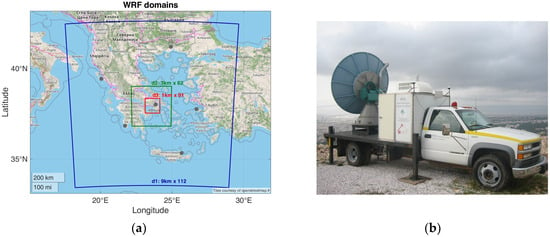
Figure 1
Highly Accessed Articles
Latest Books
E-Mail Alert
News
Topics










